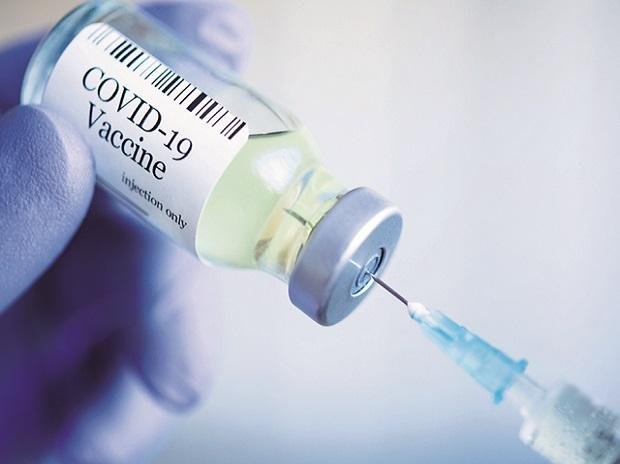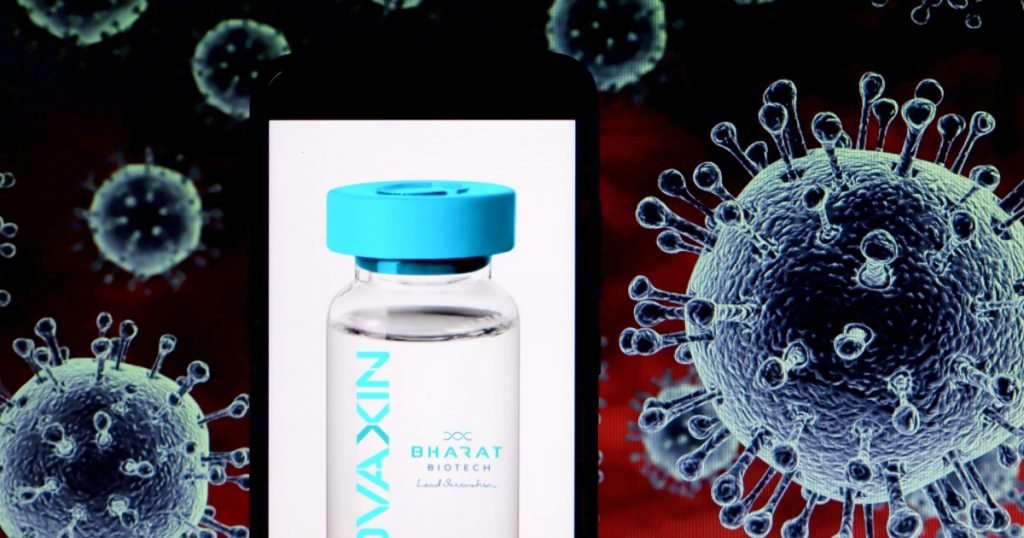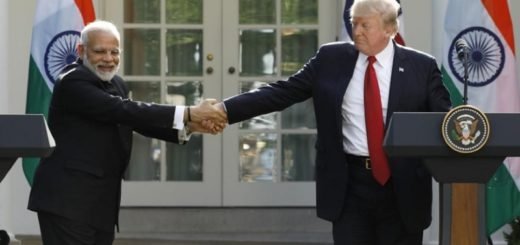The Vaccination Conundrum

In mid-January, India took up the challenge to launch the world’s largest vaccination campaign and achieved an impressive target of 60 lakh beneficiaries in under a month. Lockdown, social distancing and other virus transmission-mitigation strategies slowed down the pandemic, but it unavoidably left people susceptible to infection. Stepping into a position where there were several promising vaccine candidates and a handful that had been approved for emergency use in India, gave a glimmer of hope of returning to a safer world. This lull, however, did not last very long. From being a self-reliant vaccine producer and a global vaccine hub, India underwent a harrowing transformation and became the centre of a massive Covid-19 battleground. The unprecedented surge is attributed to the presence of viral mutants, in particular B.1.617, the presence of asymptomatic cases, and super-spreading events, according to preliminary studies by the National Institute of Virology. These occurrences are thought to be responsible for the increased transmission rates, increased disease severity, and increased number of hospitalisations and deaths. India reached a daily case count of over 300,000 in April 2021, resulting in devastating effects on the overburdened healthcare system and forced states to enter into lockdowns. It is without a doubt that the nation was completely caught off guard by this ferocious new wave of Covid-19 infections.
The path of immunising a nation with a population of almost 1.4 billion was never going to be steady, even with a target of immunising 70% of the population, but this particular course of vaccine implementation is proving to be angst. Presently, 40 million individuals are fully vaccinated in India, representing 3% of the population. By mid-April, the government announced the third phase of its vaccination drive, which included immunising individuals above the age of 18, a mammoth task that has thus far, failed to gather momentum.

In the past few weeks, we have been witness to shortcomings in the vaccination drive, marked by an inability to meet the demand of individuals waiting to receive their second dose and that of those who are part of the third phase of the drive (18-44 year olds). The disruption in the supply chain traces back to the lack of proper estimates for vaccines, a piecemeal procurement strategy, and unregulated pricing. Currently, only two manufacturers are involved in India’s vaccination drive. An approach to boost the supply, would have been to include more companies in the manufacturing ring. The drawback is that of the few public-sector undertakings that are capable of producing vaccines, some do not possess valid manufacturing licenses as their undertakings were not in accordance with good manufacturing practice (GMP) guidelines.
This highlights the urgency for a more proactive approach to the vaccine production process, such as providing opportunities for public-private partnerships. In response to the recent vaccine shortage, the government recently approved the entry of 3 PSUs, namely, Haffkine Biopharmaceutical Corporation Ltd, Indian Immunologicals Limited, and Bharat Immunologicals and Biologicals Limited, into the vaccine manufacturing process. Lack of adherence to social distancing norms, improper wearing of masks, and lack of appropriate respiratory etiquette, coupled with vaccine hesitancy may have spilt over onto large political gatherings and social functions, contributing to the increased case loads. In addition, the government faced criticism for its vaccine diplomacy programme, Vaccine Maitri, which was launched during the same time as that of the domestic immunisation programme. Whilst other nations planned their own immunisation schedules, India followed the path of ‘non nobis, sed omnibus’, which loosely translates as ‘not for us, but for everyone’. In the backdrop, was India’s need to emerge as a global power and showcase her humanitarian efforts and diplomatic prowess. This act of diplomacy however, may have contributed to India becoming a vaccine importer over the last few weeks.
Several vaccine candidates have been approved for emergency-use in India. Currently, India’s immunisation program includes Oxford-AstraZeneca’s adenoviral vector vaccine (COVISHIELD), manufactured by the Serum Institute of India Ltd and Astra Zeneca Ltd, COVAXIN, India’s indigenous vaccine, manufactured by Bharat Biotech Ltd and Sputnik V, produced by Russia’s Gamaleya Research Institute. Bharat Biotech is seeking approval from the WHO for the inclusion of COVAXIN into in their emergency use list. Pfizer-BioNtech has produced an m-RNA based vaccine (COMIRNATY®), which is not yet available in India. Negotiations between Pfizer and the Indian government are underway regarding Pfizer’s demand for an indemnity clause. Other overseas vaccine makers, including Moderna and Johnson and Johnson are expected to rollout single-dose vaccines by 2022.

Dosing strategies have been incorporated into all of these vaccines as a single dose of a vaccine may not be sufficient to elicit an effective immune response. Booster shots, taken 3-6 weeks after the initial vaccination, ensure that the immune response is complete and imparts long-term protection. Presently, the government of India has modified its immunisation schedule by increasing the dose interval from 6-8 weeks to 12-16 weeks for COVISHIELD. This has been recommended by the COVID Working Group on the basis of recent research findings. A study showed that when a dosing interval of 12-weeks was placed between vaccine doses, the efficacy of Oxford-AstraZeneca’s vaccine was found to be 81%, as opposed to the recommended 6-week interval, which reported an efficacy of 55%. Another study went on to reveal that a single ‘priming’ dose brought about immunity that lasted upto 90 days post-vaccination, indicating that a booster would be required after 3 months. In addition, a study by Pfizer-BioNtech, on individuals above the age of 80, observed that the level of neutralising antibodies was more than 3.5 times in vaccinated individuals who had a gap of 12-weeks between doses compared to those who had a gap of 3-weeks. Accordingly, the UK had taken steps to delay the second dose of vaccine (Oxford-AstraZeneca or Pfizer-BioNtech) administration to its citizens as a means to reduce the number of hospitalisations, severe disease and mortality rates.
The aim of this dose-sparing strategy was to vaccinate the maximum number of eligible people with the first dose and avoid vaccine shortage. Skeptics of the dose-sparing strategy opine that a dose-sparing strategy may generate a population of individuals who are only partially immune. This could serve as an ideal environment for viral mutations to occur that confer selective advantages, such as increased transmissibility or the ability to evade immune responses. Taking into consideration the increased circulating levels of SARS-CoV2 in the Indian population, an alternative approach would be to incorporate a dose-sparing strategy once the levels of viral levels in the population have abated, thereby, reducing the risk of generating a partially immune population.
Amidst the immunisation drive, there have been reports of blood clots in individuals vaccinated with the Oxford-AstraZeneca vaccine. Taking into consideration the vastness and speed of the global immunisation process, safety concerns are of utmost concern. Vaccine-induced autoimmunity occurs as a result of immune cross-reactivity. It refers to a series of adverse reactions that occur as a result of molecular interactions between the vaccinated host and the vaccine components. This is likely to be due to the presence of significant similarity between host proteins and viral components of the vaccine. This immune cross-reactivity leads to a series of reactions where the immune system’s response towards the antigen may be directed towards host proteins as well, triggering autoimmunity within the vaccinated host. Recent reports of thrombotic events in individuals vaccinated with COVISHIELD suggests that vaccination may trigger the production of autoantibody platelet-factor 4 (PF4), through this mechanism. The adverse thrombotic reactions observed are referred to as vaccine-induced prothombotic immune thrombocytopenia (VIPIT).
These reports suggest that the vaccine design needs to be modified so as to eliminate chances of cross-reactivity. According to the Ontario COVID-19 Science Advisory Table, clinicians are advised to be on the watch for symptoms of VIPIT, which include persistent headaches, double vision, seizures, shortness of breath, swelling and redness of the limbs, which arise 5-20 days post-vaccination. Confirmatory diagnosis is carried out through blood tests that detect autoantibody PF4 and D-dimer, which are indicative of thrombotic events as well as through imaging studies. The treatment to VIPT is the intravenous administration of immunoglobulin. Taking into consideration the rarity of these adverse reactions and the observation that the vaccine was found to be safe and efficacious in clinical trials, mass vaccination strategies are cleared for continuance but err on the side of caution. There is however an urgency to understand the clinical risks associated with the potential of vaccine-induced autoimmune conditions.

Whilst India faces a vaccine a shortage, it is shadowed by vaccine hesitancy. This should not come as a surprise considering the myriad of information on vaccine efficacies, availability, pricing, and dosing strategies that disseminates through mass media, paving the way for an infodemic. Speculations regarding COVAXIN’s safety and quality were brought into light when Brazil halted its COVAXIN order due to concerns raised by its health agency on Bharat Biotech’s compliance to GMP standards. This was further exacerbated by the Drug Controller General of India’s (DCGI) approval of COVAXIN’s use in India, prior to the completion of Bharat Biotech’s phase III trials. An accelerated approval of COVAXIN has been attributed to the favourable completion of phase I/II trials, however, the failure to publish the phase III trial data does arouse suspicion, particularly as it pertains to vaccine safety. In this light, the strategy of the government must be to maintain official channels of communication regarding vaccine policies and use positive reinforcement regarding their safety profiles, which must include publication of clinical trial data. This will create confidence within the population, particularly since one aim of the vaccination campaign is to arrive at herd immunity.
It must be borne in mind that in the case of SARS-CoV2, there are still gaps in understanding viral pathogenesis, transmission, host immune response, causal factors of severe disease, effect of underlying conditions, and host genetic factors. Sustained laboratory research and prospective clinical trials are the only solution to this. These challenges are dynamic in nature and warrants extensive discussion as they influence vaccine-policy making. We still have an enormous amount of responsibility left and this recent surge of infections has highlighted that the need of the hour is deliberation, cooperation and transparency.


















